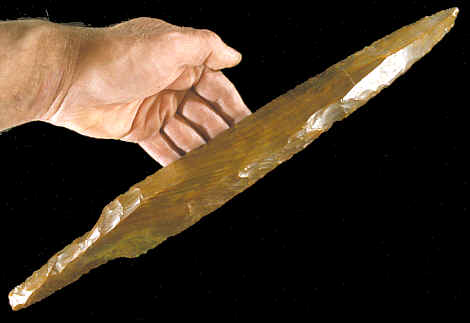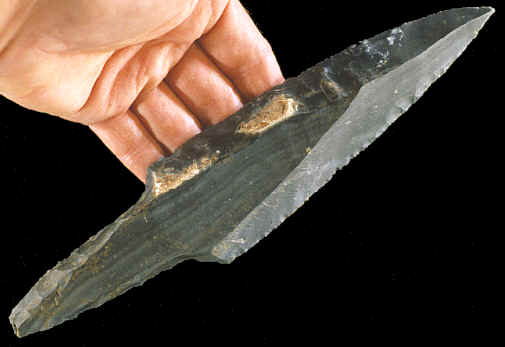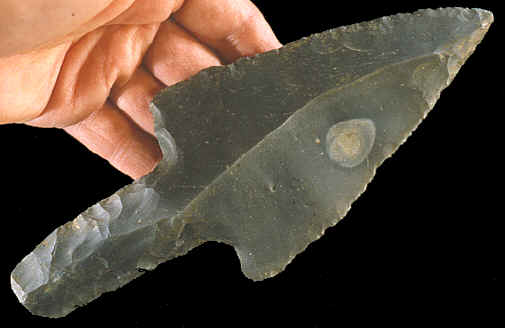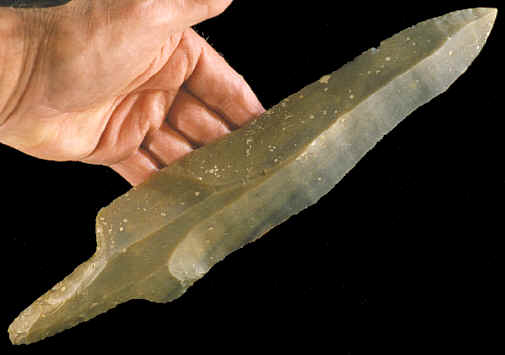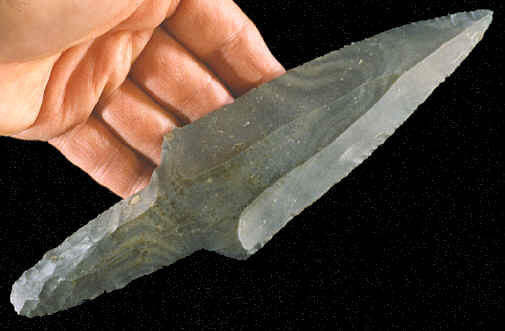|
|
|
The Mayan people were using stone tools for thousands of years before the Spanish arrived. They probably produced, by weight, as much or more flaked stone tools and ceremonial items (eccentrics) than any other culture in the Americas. They took advantage of a geological resource that was unique in Stone Age societies, which was an endless supply of easily accessible high quality chert. |
|
|
The main source of chert that was utilized by early Mayan knappers was located in northeast central Belize. A large chert-bearing zone outcrops there containing good quality fine-grained cherts. An area defined as a "cherty soil zone" has been estimated to cover an area of 338 square miles (554 kilometers) and an area of high quality chert cobbles is estimated to cover an area of 112 square miles (181 kilometers). The nodules of chert range in size from pebbles to large cobbles and on up to large boulders weighing several hundred pounds. Huge chert slabs are also present. In a pyramid at Kunamuhl in east central Belize a chert slab over six feet long had been used as a sarcophagus lid. |
|
|
Stemmed macro blade manufacturing sites are divided into two different locales, quarry sites and workshop sites. Quarry sites produced the raw lithic material, exhausted cores and the newly struck core blades. The core blades were transported from the quarry sites to the workshop sites where they were finished into stemmed macro blades and other tools. A core is rarely found on a workshop site. Cores have been found in pyramid fill in areas near the quarry sites. |
|
|
The production of stemmed macro blades would have involved at least three different job descriptions. The first would involve someone that was mining the chert by either collecting nodules on the surface or by shallow pit quarrying. The second process would involve workers who were making the macro blades on a quarrying site then transporting them to the workshop sites. The third process involves the knappers who were operating the workshops and finishing the blades into stemmed macro blades. Over 100 workshops were identified at Colha, Belize. They can be identified by the piles of lithic debris, some of them measuring up to 98.42 feet (30 meters) across and 6.56 feet (2 meters) deep. |
|
|
|
|
An example of the volume of lithic debris produced on one of the workshop sites at Colha, Belize was estimated by Erwin Roemer. A test pit measuring 2 meters square and 1.5 meters deep produced over 21 million flakes. These were the flakes measuring 1 3/16 inches (3 cm) long and above in size! |
|
| CONTINUE ON TO PAGE THREE | |
|
"REFERENCES"
1965, Willey,
Gordon R., Bullard, William R., Glass, John B & Gifford, James C., "Prehistoric Maya Settlements in the Belize Valley,"
pp. 412, 416-418. |
|
